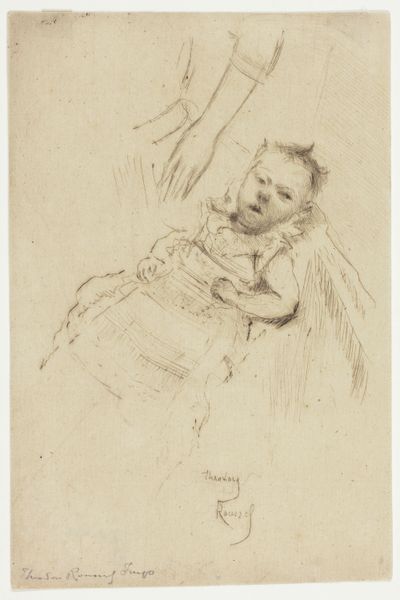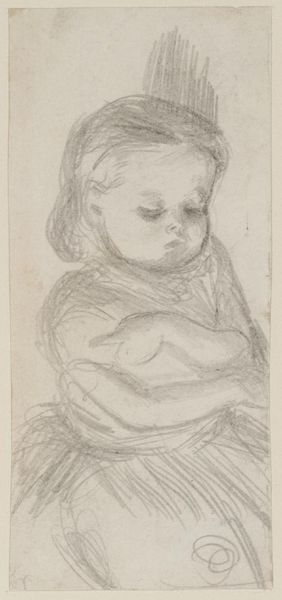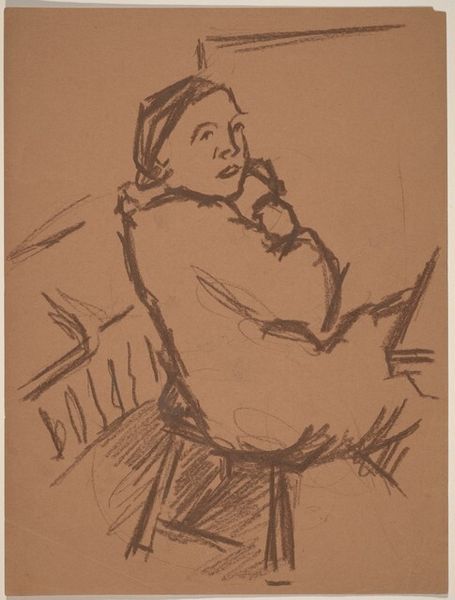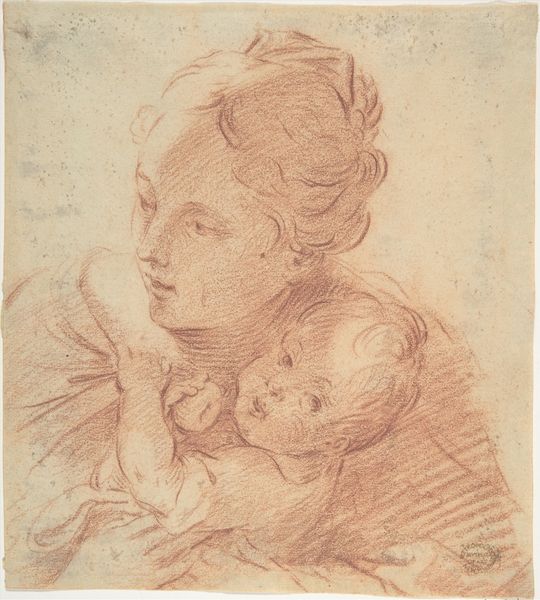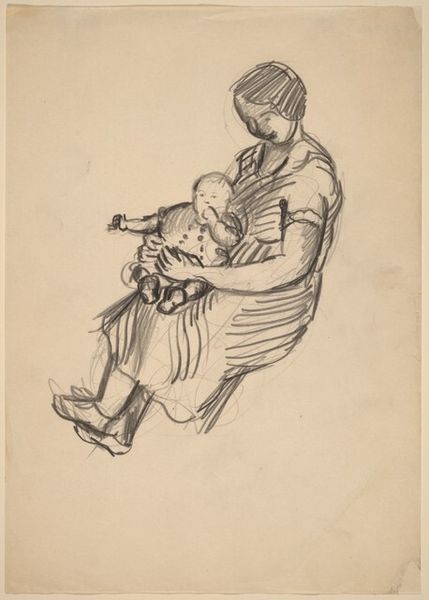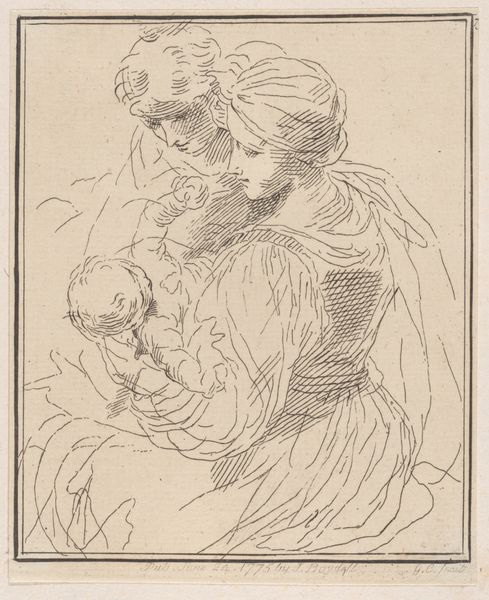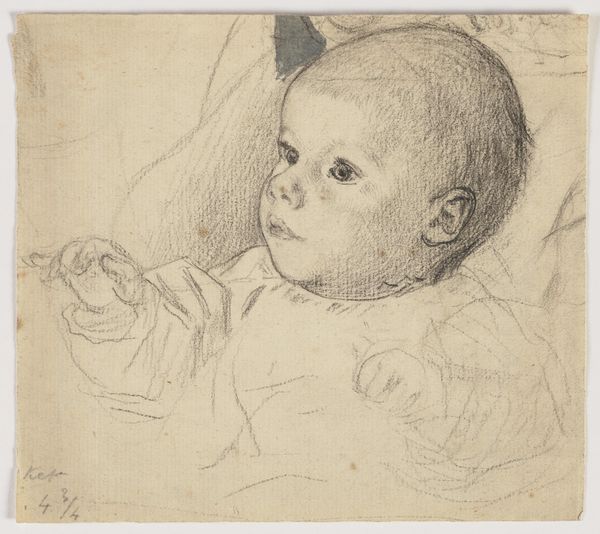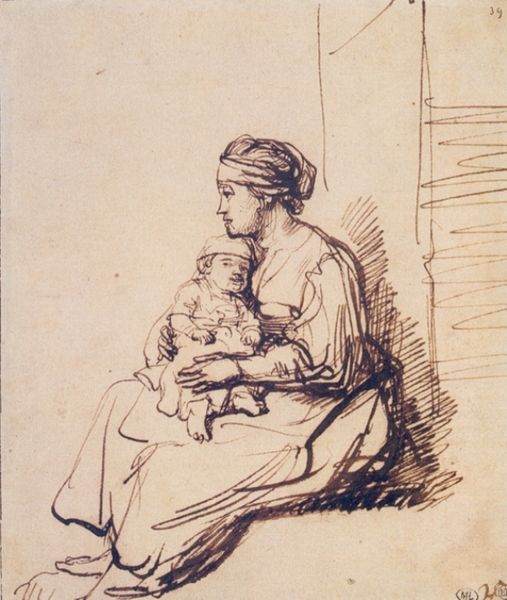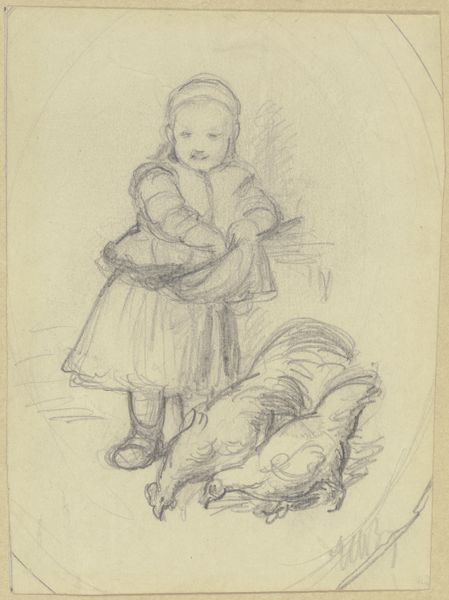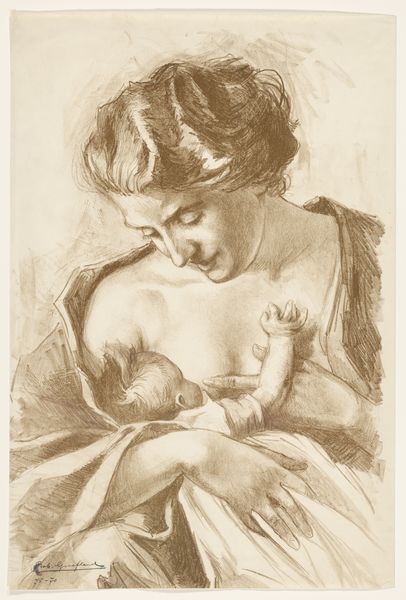
Portret van Stéphania Maria Anna Isabella de Block-Loor, staande met pop 1860
0:00
0:00
Dimensions: height 200 mm, width 127 mm
Copyright: Rijks Museum: Open Domain
Curator: This drawing, created around 1860, is entitled "Portrait of Stéphania Maria Anna Isabella de Block-Loor, Standing with Doll". It's attributed to Eugène François de Block. Editor: It feels incredibly tender. There's this protective quality, the way the little girl clutches the doll… It makes you wonder what stories they share, or the dreams they conjure together. Curator: Absolutely. The very act of depicting a child with her doll echoes broader themes of innocence and familial bonds. Dolls themselves often symbolize youth, play, and the potential for nurturing. In the Romantic era, these sentimental themes resonated strongly. Editor: Right, because you know, when I see this simple pencil sketch, it really draws me in. No vibrant colors, just the barest hint of shading, and somehow, the artist manages to capture that spark of connection. What is the scale of this sketch? Curator: It is quite modest in scale, reflecting the intimacy of the scene, which is probably smaller than a notebook. Editor: You almost forget you are observing a depiction, because you can somehow step right into their silent, shared world. Curator: Note how Block captured the folds in her simple dress. Children’s portraits became quite fashionable in the 19th century as emblems of virtue. Editor: This makes me question what Stéphania’s life was like beyond the portrait. Did she have siblings? Was the artist someone close to her family, observing fleeting moments? It’s beautiful in its mystery. Curator: The artist clearly wants to make her look pretty, adding details like the hair band that also signals that the girl came from a family of status. Editor: Absolutely. I initially looked at it as this very pure expression, but now I’m reminded it’s inevitably viewed through a lens of social presentation. The portrait exists both as personal connection and statement. Curator: Which is quite revealing. On a material level, pencil possesses this immediacy that lends itself to intimate studies, quite in line with Romantic ideals. Editor: It gives us so much, with such simple tools. This small window onto a different world, a shared glance of quiet imagination from over a hundred years ago. Curator: Indeed, Eugène François de Block invites us to observe both the material techniques and a glimpse into 19th-century sensibilities toward children.
Comments
No comments
Be the first to comment and join the conversation on the ultimate creative platform.
